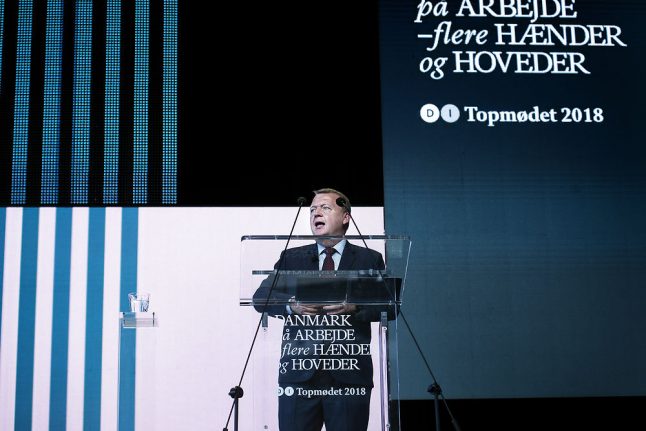Rasmussen and Frederiksen both spoke about opportunities for skilled foreign workers this week as they participated at the Confederation of Danish Industry (Dansk Industri, DI) Business Summit, writes dibusiness.dk.
“Denmark’s companies need be able to hire the employees they need, including when it involves looking beyond our borders,” Rasmussen said in his speech at the DI Business Summit, promising that the government will release a proposal within the next few weeks making it easier for Danish companies to hire foreign employees from outside the EU.
“I’d also like to go slightly off-script here to applaud the statements made by the Social Democrats this morning indicating that they are prepared to work towards some of these matters,” Rasmussen said.
The prime minister said his party was prepared to go further than others to facilitate hiring skilled foreign labour, criticising changes made to the pay limit scheme (beløbsordningen in Danish), a provision that enables companies to hire employees who are nationals of non-EU countries provided they are paid a set salary.
“A parliamentary majority without government support has hindered you [companies, ed.] by increasing requirements for the pay limit scheme. When you can’t bring in the employees you need, that means you lose orders. And it’s also money lost to the public purse, because every foreigner on the pay limit scheme contributes (to the economy) by more than 300,000 kroner, which amounts to 1.5 billion kroner in national revenue annually,” he said, citing figures from a Ministry of Finance analysis published in January this year.
The annual salary required to qualify for the scheme was in 2016 increased from 375,000 kroner by a parliamentary majority which excluded the then-single-party government led by Rasmussen, and is currently 417,793 kroner. There are no demands as to the qualifications of people employed under the scheme.
“We must make our approval list more dynamic so that it is also possible to bring in skilled workers – keeping in mind, naturally, that these are people who wish to take part in our society. It’s no secret that the conditions at Christiansborg aren’t optimal. I have therefore discussed the situation with partners on the labour market, and my impression is that trade unions understand that companies must be able to easily hire the employees they need,” the PM said.
Social Democrat leader Frederiksen also said that Danish companies should be able to recruit all the highly specialised employees they need, including from outside the EU.
“But given that (this labour) is so specialised, I’m certain that you’re also willing to pay for it,” Frederiksen said in reference to the required salary of the pay limit scheme, which her party voted to increase.
Frederiksen said she believes there should be more focus on recruiting employees from southern Europe, where unemployment rates are high.
Asked by moderator Cecilie Beck why there is a difference between employees from southern Europe and countries outside the EU, the Social Democrat leader claimed integration of non-EU workers presented a greater challenge than for those from outside the European Union.
“It makes a big difference in terms of our ability to integrate that employee. In the post-war years, when engines were also running at full steam, we brought in large numbers of unskilled workers from abroad. Many fared well, but there were also major integration challenges that we still feel the consequences of today,” she said.
“This is why we can’t look at the question with solely the interests of business and the need for immediate labour in mind,” Frederiksen added.
She also noted that there are still Danish reserves to be drawn upon.
“We have 50,000 young people who don’t have anything to do. I’m not claiming that they can step in from one day to the next and be the employees you need. But with the right initiatives and leadership, they can become that. And there are many unskilled workers you can help by accrediting their competences,” she said.
READ ALSO: Denmark trailing neighbours on graduate employment: analysis



 Please whitelist us to continue reading.
Please whitelist us to continue reading.